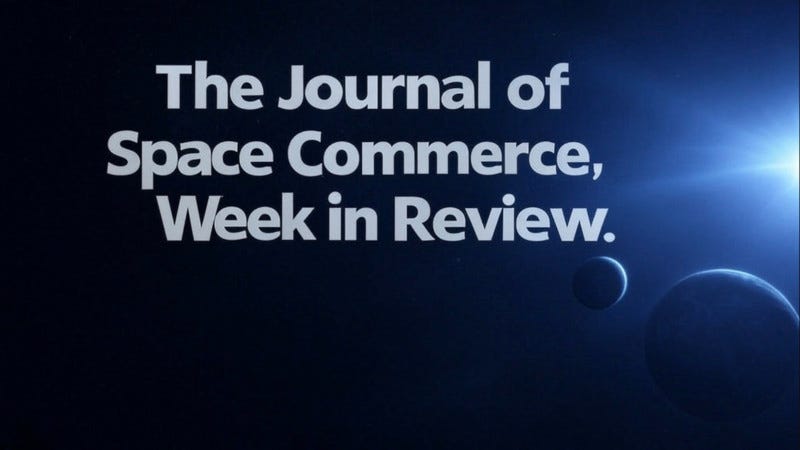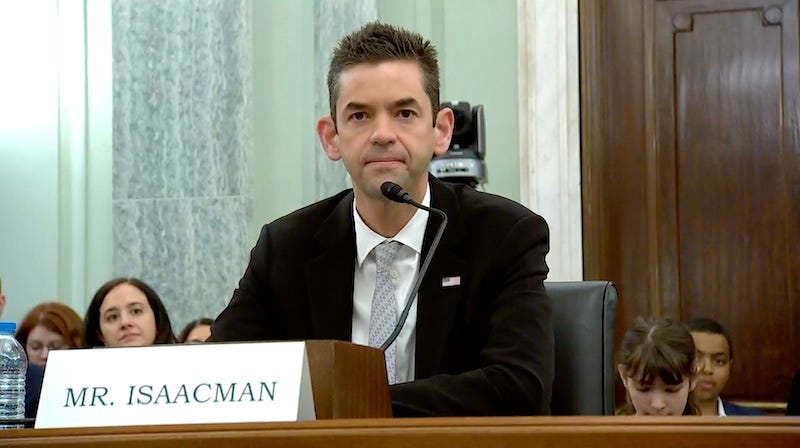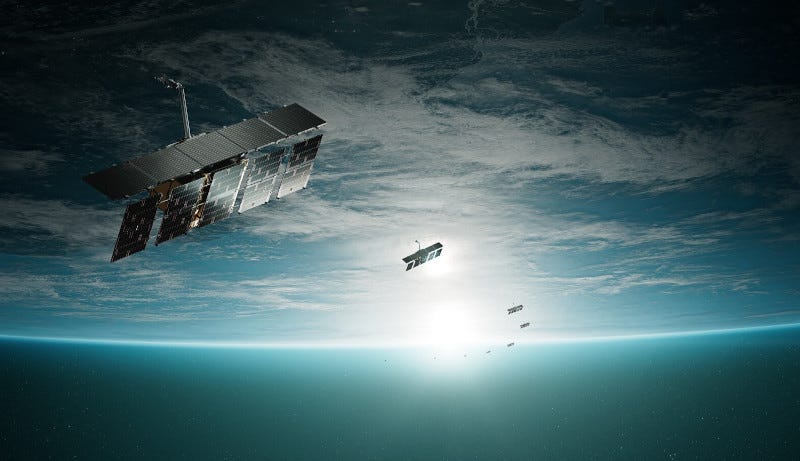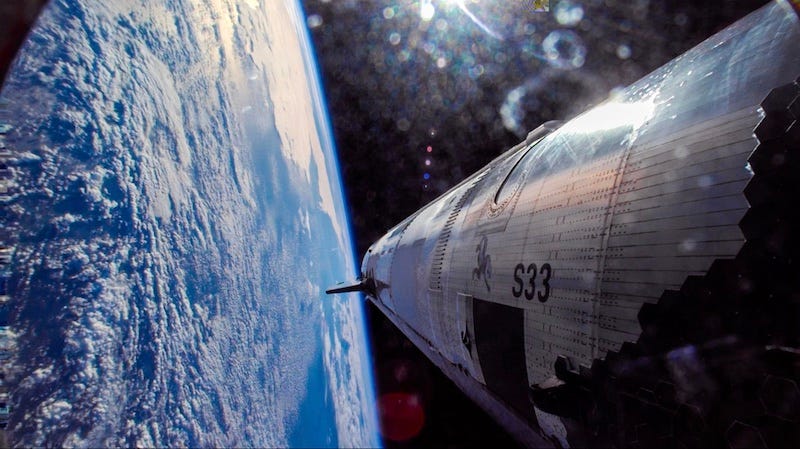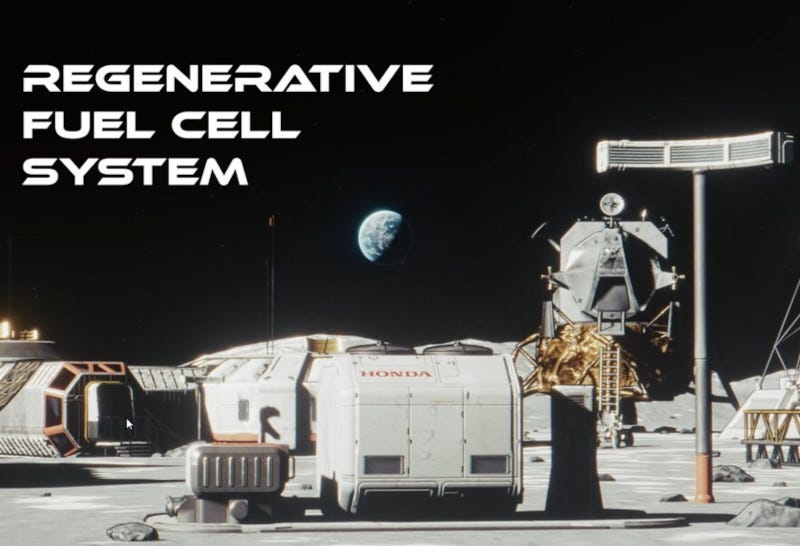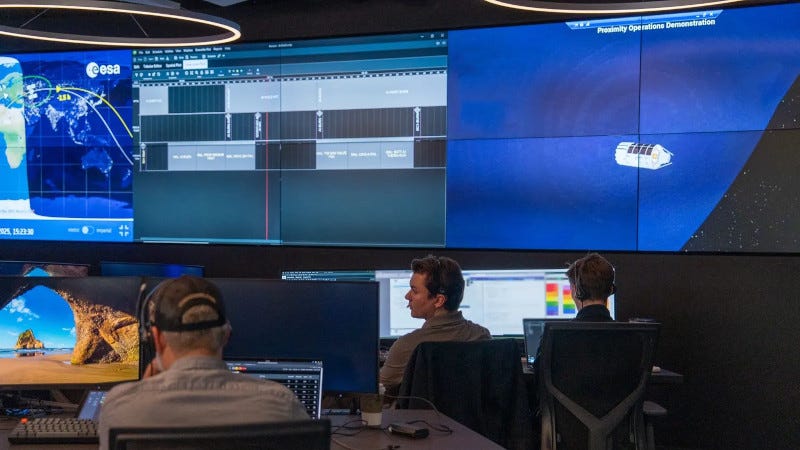NASA Administrator nominee Jared Isaacman meets with the U.S. Senate, and Political Change and Space Commerce. Here are some of the top stories from The Journal of Space Commerce this week.
The U.S. Senate Commerce, Science and Transportation committee held a hearing Wednesday to consider the nomination of Entrepreneur Jared Isaacman to be the next NASA Administrator. While Isaacman by his own admission to the committee is not a scientist or particularly political, he has traveled to space ... paying his own way.
Isaacman has flown on two private space missions, commanding both the Inspiration4 mission and the Polaris Dawn mission. On that later flight, he became the first private citizen to conduct an extra-vehicular activity. His nomination became official on January 20, 2025, the day President Trump was inaugurated. In his opening prepared remarks to the committee, he outlined his vision for NASA, while acknowledging the agency has challenges.
"Presidents have called for a return to the Moon and a path to Mars since 1989, and well over $100 billion has been spent without the intended results," he said. "Most programs ... new telescopes, rovers and x-planes, entire space ships ... are over budget and behind schedule. And this is discouraging, because when people look up at the stars and wonder what is out there, they want those answers today, and not decades down the road.
"And I know that it is not lost on the members of this committee that we have geopolitical rivals moving at impressive speeds. It's imperative for our national security, our pride and all that we stand to gain in exploration that we never come in second place," Isaacman said.
Following opening remarks Senator Maria Cantwell (D-WA), the ranking Democrat on the panel, asked Isaacman about his thoughts on firm, fixed-price contracts that are often awarded by NASA to private companies.
"Having run a defense aerospace company for more than a decade, I generally am a fan, of firm, fixed-price contracts and being held accountable for what we bid. In terms of the difference between NASA's in-house expertise and what commercial industry is able to provide ... I believe NASA should, again, per my prepared remarks, on the near impossible that no one else is capable of doing. And when they figure it out, commercial industry takes over and brings the rest of the world to follow," Isaacman said.
If confirmed, Isaacman said the goals of the agency would be for American astronauts to lead the way in the ultimate high ground of space; to ignite a thriving economy in Low Earth Orbit, and: to be a force-multiplier for science. The hearing concluded without a vote on Isaacman's nomination.
-0-
According to a new report from global technology intelligence firm ABI Research, the total number of active LEO (including VLEO) satellites in operational orbit has the potential to increase from 7,473 in 2023 to approximately 42,600 by 2032. As China and Europe intensify their efforts and make significant investments in the LEO satellite market, there is a growing emphasis on space technologies for both national and commercial strategies. With more companies entering this sector, there are vast opportunities to expand across various industry verticals to capture the potential the space domain offers.
Many satellite network operators are seizing this opportunity to invest in their networks or collaborate with technology companies. In the AI and edge processing space, companies like AWS, Spire Global, Telesat Lightspeed, D-Orbit, Anduril, and Ubotica are exploring new opportunities to deliver advanced systems that integrate these technologies into satellite networks.
Chinese operators such as Spacesail, China Satellite Network Group, and Shanghai Landspace Technology are also accelerating the development of their satellite constellations to strengthen national defense and security systems. This includes their ambition to become global leaders in communications and other key space capabilities.
-0-
The FAA-required investigation of the SpaceX Starship Flight 7 mishap on Jan. 16 is closed. There were no public injuries and one confirmed report of minor vehicle damage in the Turks and Caicos Islands.
The FAA oversaw and accepted the findings of the SpaceX-led investigation. The final mishap report cites the probable root cause for the loss of the Starship vehicle was stronger than anticipated vibrations during flight led to increased stress on, and failure of, the hardware in the propulsion system. SpaceX identified 11 corrective actions to prevent a reoccurrence of the event. The FAA verified that SpaceX implemented corrective actions prior to Flight 8.
The most probable root cause for the loss of ship was identified as a harmonic response several times stronger in flight than had been seen during testing, which led to increased stress on hardware in the propulsion system. The subsequent propellant leaks exceeded the venting capability of the ship’s attic area and resulted in sustained fires.
The FAA is overseeing the SpaceX-led investigation of the Starship Flight 8 mishap that occurred on March 6. The investigation remains open. A return to flight of the Starship vehicle is based on public safety. SpaceX may not launch Starship again until the FAA accepts the final mishap investigation report or makes a return to flight determination and all other licensing requirements are met.
-0-
Coming up, an update on Axiom Station, and the effect of foreign policy on space commerce. But right now, why not take a minute to become a paid subscriber to The Journal of Space Commerce Whether you’re a space professional or enthusiast, paid subscribers have first access to premium articles and podcasts focused on the new space economy. Just visit www.exterrajsc.com on Substack, and help keep The Journal of Space Commerce independent as we chronicle, cajole and, when necessary, critique the commercial space industry.
-0-
A high-differential pressure water electrolysis system under development by Honda R&D will be tested aboard the International Space Station (ISS) in collaboration with Sierra Space and Tec-Masters. The project is part of Honda's vision for a regenerative fuel cell system that could provide advanced energy storage capable of supporting human life on the lunar surface.
Honda envisions the circulative renewable energy system, which would continuously produce oxygen, hydrogen, and electricity, to be part of the infrastructure for humanity's sustained habitation on the Moon – utilizing the available resources of sunlight and water.
During the Lunar Day, the system will use electricity generated by the sun to power the process. Honda's high-differential pressure water electrolysis system will then produce hydrogen and oxygen from water. During the Lunar Night, when the Moon is not receiving sunlight, some of the oxygen will be used for astronauts to breathe. The system will use the remaining oxygen, along with the hydrogen produced during the Lunar Day, to generate electricity.
After the fuel cells generate electricity, the only byproduct is water, which is recycled back into the water electrolysis system to create a closed-loop energy cycle. This process is similar to how a home solar system operates on Earth.
For the ISS testing, Honda is collaborating with Sierra Space and Tec-Masters, a provider of innovative scientific and technological solutions. Sierra Space will be the primary space mission integrator, working with NASA to transport materials on Sierra Space's Dream Chaser spaceplane. Tec-Masters will be the ISS technology expert.
-0-
A significant milestone in the development of flight operations for Axiom station has been reached with the successful execution of the first simulated mission of the Payload, Power, and Thermal Module (PPTM).
This demonstration served as a critical step in aligning the infrastructure and personnel necessary to prepare Axiom Space for future space station flight operations. The primary objective was to establish and test the flow of real-time data from the simulator to vehicle displays within the MCC-A infrastructure. A secondary objective focused on exercising these tools in a controlled environment, allowing an experienced flight control team to assess the tools’ effectiveness.
Moving forward, the integrated team will define new demonstration objectives designed to further refine operational readiness and enhance training fidelity.
-0-
This week on The Ex Terra Podcast, we talked with Dr. Namrata Goswami, an author and educator currently teaching with the West Space and Schriever scholars program at Johns Hopkins University.
There has been a lot of political change since we last talked with Dr. Goswami, both domestically and on the world stage. Uncertainty over tariffs is roiling the stock market, and international relations are shifting like an offshore sandbar. What does all that mean for space commerce and space programs among our largest competitors ... China, Russia and India?
"Space is seen as so vital, for example, for China's economic development, for China's capacity in terms of its own other technologies like artificial intelligence, robotics, their economy, that they find the money. And they find very long-term money. And what they do is that, especially for China, India and Russia to an extent. Russia is actually facing (many) more issues than China and India in terms of the funding for its program. So I would argue that both China and India have allocated money in their five year plans for their space programs. And because they give (it) so much of a high priority that they find the money for it."
Dr. Namrata Goswami co-authored the book "Scramble for the Skies: The Great Power Competition to Control the Resources of Outer Space".
-0-
And those are some of the top stories we covered for you on The Journal of Space Commerce this week. You can get daily updates on space commerce by subscribing to The Journal of Space Commerce on Substack at www.exterrajsc.com. And please consider becoming a paid subscriber. Whether you’re a space professional or enthusiast, paid subscribers have first access to premium articles and podcasts focused on the new space economy. Just visit www.exterrajsc.com and help keep The Journal of Space Commerce independent as we chronicle, cajole and, when necessary, critique the commercial space industry.
You Might have Missed:
SpinLaunch Announces $12 Million Investment from Kongsberg
In-Space Demo of Refueling Technology Demonstration Contract Awarded
LEOcloud Agrees to Acquisition by Voyager
National Security Space Launch Contracts Awarded
Agreement Reached for Lunar Data Storage Spacecraft




